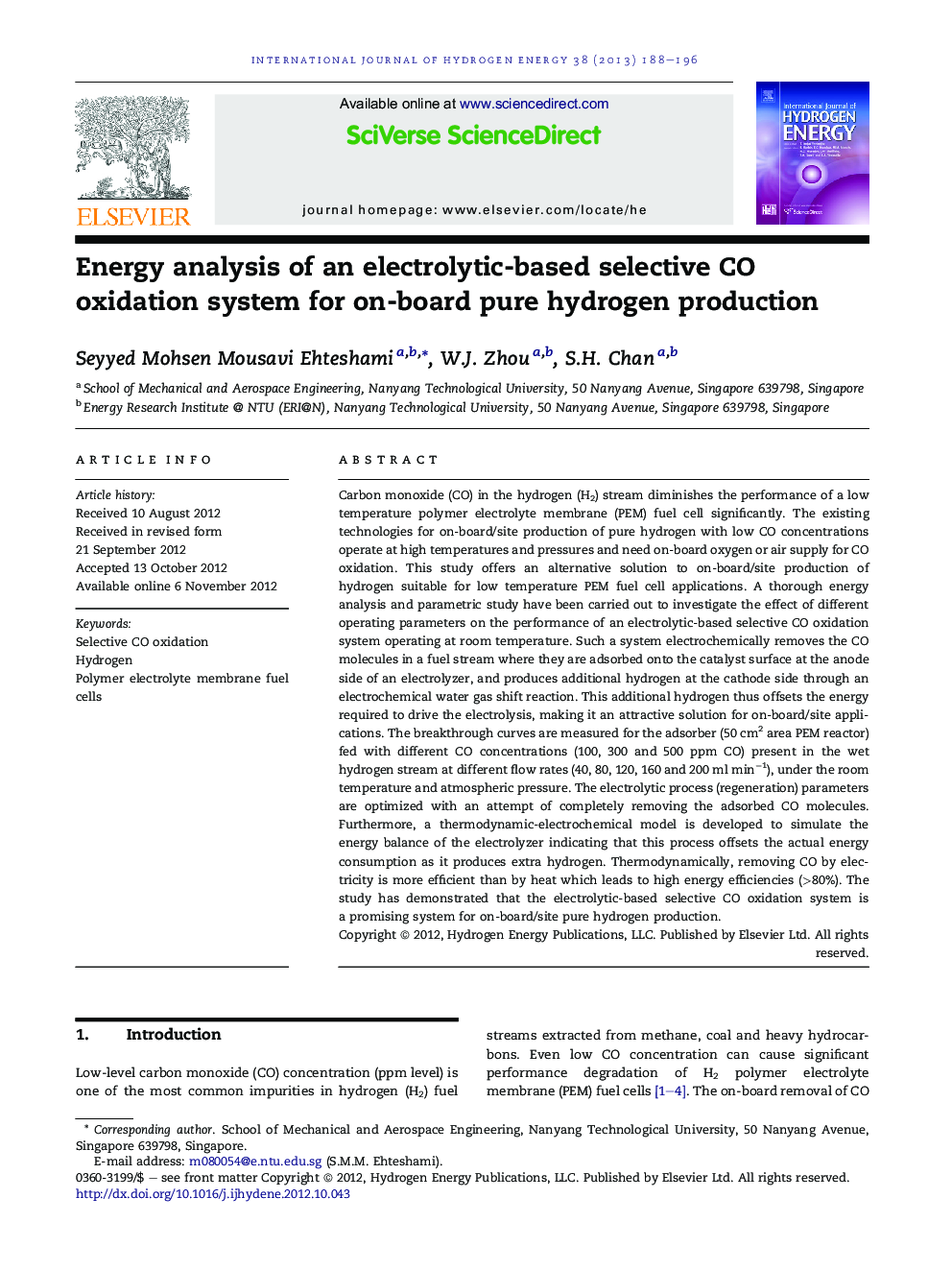| Article ID | Journal | Published Year | Pages | File Type |
|---|---|---|---|---|
| 1274363 | International Journal of Hydrogen Energy | 2013 | 9 Pages |
Carbon monoxide (CO) in the hydrogen (H2) stream diminishes the performance of a low temperature polymer electrolyte membrane (PEM) fuel cell significantly. The existing technologies for on-board/site production of pure hydrogen with low CO concentrations operate at high temperatures and pressures and need on-board oxygen or air supply for CO oxidation. This study offers an alternative solution to on-board/site production of hydrogen suitable for low temperature PEM fuel cell applications. A thorough energy analysis and parametric study have been carried out to investigate the effect of different operating parameters on the performance of an electrolytic-based selective CO oxidation system operating at room temperature. Such a system electrochemically removes the CO molecules in a fuel stream where they are adsorbed onto the catalyst surface at the anode side of an electrolyzer, and produces additional hydrogen at the cathode side through an electrochemical water gas shift reaction. This additional hydrogen thus offsets the energy required to drive the electrolysis, making it an attractive solution for on-board/site applications. The breakthrough curves are measured for the adsorber (50 cm2 area PEM reactor) fed with different CO concentrations (100, 300 and 500 ppm CO) present in the wet hydrogen stream at different flow rates (40, 80, 120, 160 and 200 ml min−1), under the room temperature and atmospheric pressure. The electrolytic process (regeneration) parameters are optimized with an attempt of completely removing the adsorbed CO molecules. Furthermore, a thermodynamic-electrochemical model is developed to simulate the energy balance of the electrolyzer indicating that this process offsets the actual energy consumption as it produces extra hydrogen. Thermodynamically, removing CO by electricity is more efficient than by heat which leads to high energy efficiencies (>80%). The study has demonstrated that the electrolytic-based selective CO oxidation system is a promising system for on-board/site pure hydrogen production.
► Studying an electrolytic-based CO oxidation system producing additional H2. ► This additional hydrogen offsets the energy required to drive the electrolysis. ► High energy efficiencies are achieved (>80%). ► The long term performance of the system not affected by sequential regenerations. ► A promising approach to produce pure hydrogen for on-board applications.
